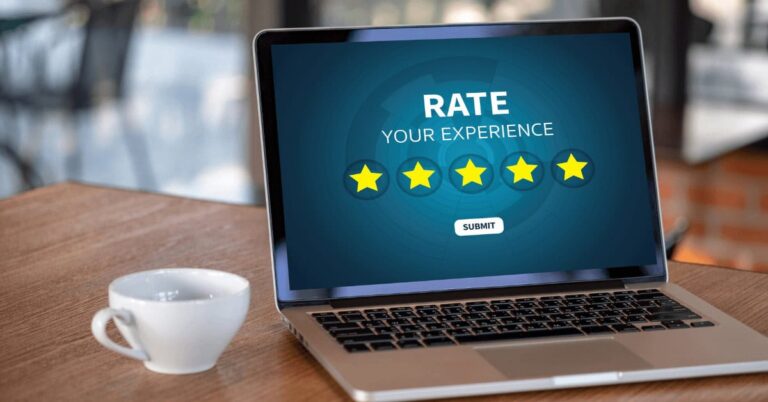Getting a business loan isn’t always the big dramatic scene people expect. There’s no giant rubber stamp slamming onto a desk or a suited banker nodding solemnly across a conference table. More often, it’s a tired founder scrolling through options at midnight, weighing a dozen trade-offs, all while trying to keep the lights on and payroll met. The truth is, business lending isn’t about glossy brochures and buzzwords—it’s about fit. The right loan at the right time can quietly unlock growth, while the wrong one can dig a hole fast. But with so many types of financing out there, from the traditional to the slightly sketchy, it’s not always obvious what actually makes sense for your business.
Table of Contents
ToggleTraditional Term Loans Still Hold Ground
Let’s start with the classics. Term loans, whether from a bank or an online lender, are what most people picture when they think “business loan.” You borrow a lump sum, repay it over a set term, and get hit with interest along the way. They’re dependable, familiar, and usually cheaper than other options—if you can get approved. That’s the catch. Banks still love strong credit scores, healthy financials, and businesses that have been around long enough to show stability. If you’re pre-revenue or your tax returns are a mess, this door might not open for you.
That said, for established companies looking to fund a specific project, equipment, or even an expansion, this can be one of the most straightforward, cost-effective tools in the toolbox. Think of it like a reliable used truck. It’s not flashy, but it gets the job done, doesn’t drain your wallet, and doesn’t show up with hidden surprises.
Lines Of Credit For Businesses That Need Flexibility
A business line of credit works more like a credit card. You get access to a pool of money, draw what you need when you need it, and only pay interest on what you actually use. It’s a go-to for managing working capital, smoothing over cash flow dips, or covering seasonal slowdowns without locking yourself into a rigid payment plan.
Where term loans are for big-ticket items, lines of credit are better for the ebb and flow of real life. If you run a business with unpredictable revenue—like a design firm juggling client payments or a small manufacturer ordering materials ahead of invoices clearing—this kind of flexibility is gold. It also gives you breathing room. You can cover expenses quickly without jumping through hoops every time, which becomes especially important during short-notice opportunities or unexpected bills.
But not all lines of credit are created equal. Rates can climb fast, and some lenders tuck in fees for inactivity or low usage. And approval isn’t automatic. Lenders still look for steady revenue and decent credit. But if you can get it, it’s one of the more useful financing options out there—especially when you’re juggling the short term vs. long term loans debate in real time.
There’s also one more gem buried in this category that doesn’t always get the spotlight it deserves: accounts receivable financing. This isn’t some outdated relic from corporate finance textbooks. It’s a lifeline for businesses that are constantly waiting on payments. If your customers take 30, 60, or even 90 days to pay—and you’re still stuck fronting payroll or inventory costs—this type of financing lets you tap into those outstanding invoices for immediate cash. It’s not debt in the traditional sense; you’re accelerating money that’s already yours. For businesses with solid receivables but slow cash flow, this can be the most practical option you’re overlooking.
SBA Loans
SBA loans sound great on paper: lower interest rates, longer terms, and government backing. The Small Business Administration doesn’t actually lend you the money, but it does guarantee part of the loan, which makes lenders more willing to take a chance on you. In practice, though, these loans come with an application process that’s famously slow and documentation-heavy. If you need funding next week, keep scrolling.
Still, for entrepreneurs who can wait it out, SBA loans offer some of the most attractive terms available. They can work for refinancing debt, buying real estate, or even covering startup costs. The 7(a) program is the most well-known, but there are other versions tailored to specific needs. It’s the loan equivalent of buying in bulk at Costco—great deal, but you’re going to have to dig through some fine print and wait your turn.
This isn’t the quick cash option, but it is a smart, long-term play if you’re planning ahead. Just be ready to bring your patience and your paperwork.
Merchant Cash Advances
Let’s talk about the elephant in the room. Merchant cash advances get a lot of flak—and for good reason. They’re easy to get and even easier to misuse. A lender gives you a lump sum, and you repay it through a daily or weekly percentage of your credit card sales. There’s no fixed interest rate, just a “factor rate,” which is code for “more expensive than you think.”
These are marketed to small business owners as fast solutions, and they are fast. But the repayment structure can become a stranglehold, especially for businesses with thin margins. Daily deductions don’t leave much wiggle room, and stacking multiple advances (which lenders sometimes allow) can spiral quickly.
Still, there are scenarios where they make sense. If you have a predictable stream of card sales, need money immediately, and don’t qualify for anything else, they can serve as a stopgap. Just know what you’re walking into, and avoid using them repeatedly. The money’s easy, but the consequences can stretch longer than you expect.
Equipment Financing
If your business relies on equipment—vehicles, ovens, commercial washers, medical machines—you don’t always want to throw down tens of thousands of dollars upfront. Equipment financing lets you purchase what you need without blowing your cash reserves. The equipment itself acts as collateral, which makes these loans easier to qualify for and often lowers the risk for lenders.
This type of financing tends to be straightforward and fairly transparent. Payments are fixed, and you typically own the equipment once it’s paid off. Compared to leasing, this can be a better long-term move if the gear holds its value or you’ll use it for years.
What makes it appealing is that it doesn’t drain your operating cash. You keep liquidity while still acquiring assets that grow your business. Just don’t overextend. It’s easy to get swept up buying more than you need when someone else is footing the bill upfront.
When Loans Actually Work For You
Business loans aren’t a magic fix, but they’re not villains either. The key is matching the type of loan to what your business actually needs, not just what sounds appealing on a lender’s website. A great loan should add fuel, not friction. It should solve a problem, not create new ones you’ll have to sort out six months later.
You don’t need to know every technical detail or memorize acronyms. What matters is clarity: how much you’re borrowing, how you’ll repay it, and what the real cost looks like when the dust settles. Whether you’re building something new, stabilizing what you’ve got, or just trying to survive a rough quarter, the right loan can offer space to breathe—and that’s often worth more than the money itself.











